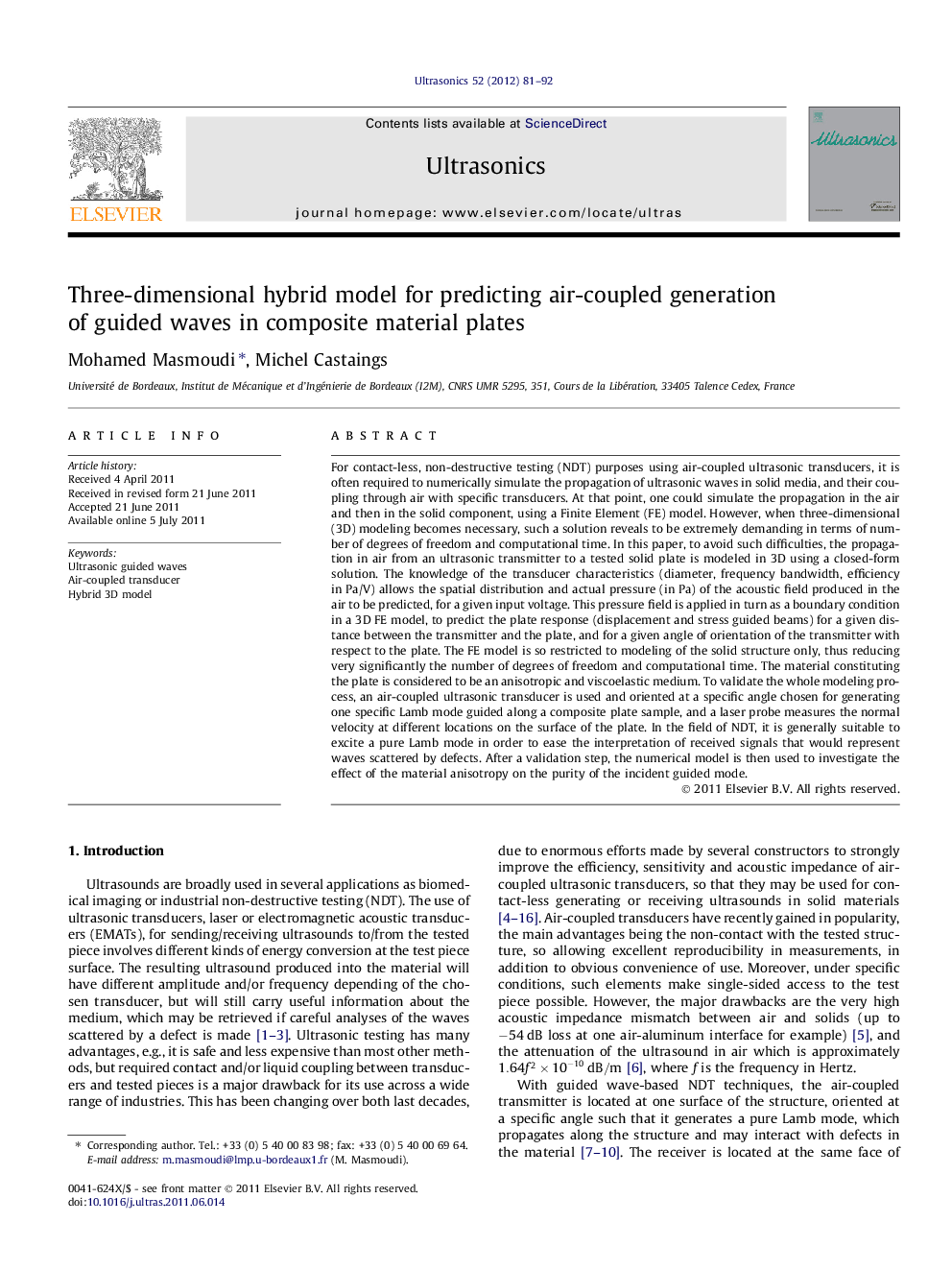| کد مقاله | کد نشریه | سال انتشار | مقاله انگلیسی | نسخه تمام متن |
|---|---|---|---|---|
| 1759490 | 1019279 | 2012 | 12 صفحه PDF | دانلود رایگان |

For contact-less, non-destructive testing (NDT) purposes using air-coupled ultrasonic transducers, it is often required to numerically simulate the propagation of ultrasonic waves in solid media, and their coupling through air with specific transducers. At that point, one could simulate the propagation in the air and then in the solid component, using a Finite Element (FE) model. However, when three-dimensional (3D) modeling becomes necessary, such a solution reveals to be extremely demanding in terms of number of degrees of freedom and computational time. In this paper, to avoid such difficulties, the propagation in air from an ultrasonic transmitter to a tested solid plate is modeled in 3D using a closed-form solution. The knowledge of the transducer characteristics (diameter, frequency bandwidth, efficiency in Pa/V) allows the spatial distribution and actual pressure (in Pa) of the acoustic field produced in the air to be predicted, for a given input voltage. This pressure field is applied in turn as a boundary condition in a 3D FE model, to predict the plate response (displacement and stress guided beams) for a given distance between the transmitter and the plate, and for a given angle of orientation of the transmitter with respect to the plate. The FE model is so restricted to modeling of the solid structure only, thus reducing very significantly the number of degrees of freedom and computational time. The material constituting the plate is considered to be an anisotropic and viscoelastic medium. To validate the whole modeling process, an air-coupled ultrasonic transducer is used and oriented at a specific angle chosen for generating one specific Lamb mode guided along a composite plate sample, and a laser probe measures the normal velocity at different locations on the surface of the plate. In the field of NDT, it is generally suitable to excite a pure Lamb mode in order to ease the interpretation of received signals that would represent waves scattered by defects. After a validation step, the numerical model is then used to investigate the effect of the material anisotropy on the purity of the incident guided mode.
► A model is developed to simulate the propagation of ultrasounds in air and plate.
► The purity of the plate mode depends on the distance away from the transmitter.
► The purity of the plate mode depends on the direction of the propagation.
Journal: Ultrasonics - Volume 52, Issue 1, January 2012, Pages 81–92